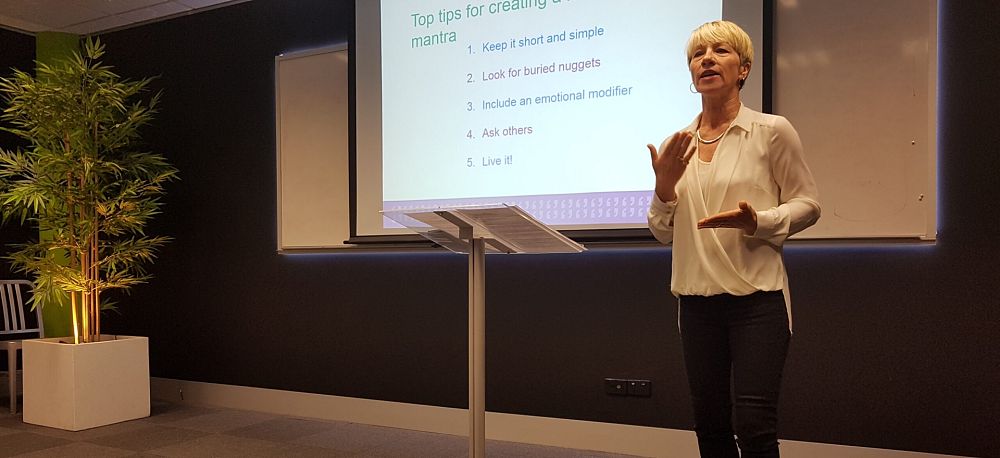Beloved Brands Are Built on Great Cultures

Beloved Brands Are Built on Great Cultures
In the musical Moulin Rouge, nightclub owner Harold Zidler famously says, ‘For this is more than a nightclub. The Moulin Rouge is a state of mind!’. The Moulin Rouge became a beloved brand built on a collective mindset. The beliefs and values that bonded together the bohemians and artists of the Moulin Rouge were the ideals of truth, beauty, freedom and love. This shared mindset released a potent energy force that inspired a way of life and, ultimately, defined the nightclub’s brand.
Similarly, the beliefs and values underpinning organisational culture can galvanize employee mindsets and inspire a shared purpose to achieve business objectives. Not only does culture influence employee morale, productivity and retention, the collective mindset culture nurtures also has a direct bearing on the customer experience and, ultimately, defines the organisation‘s brand.
Zappos, for example, is a beloved brand built on a great culture, underpinned by the simple shared purpose, ‘to live and deliver wow’. According to Zappos, ‘For all our emphasis on customer service, our #1 priority is company culture. It’s what makes us successful... We believe that if we get the culture right, then most of the other stuff — like delivering great customer service or building a long-term enduring brand or business — will be a natural byproduct‘.
Like the foundations of a house, the elements of culture are the pillars of an organisation. In my work I’ve come across a diverse array of definitions and criteria used for developing the key culture pillars of purpose, vision, mission and principles. I’ve noticed that when there is a lack of clarity between the concepts, it can result in culture statements sounding the same or lacking meaning, often leading to misunderstanding, confusion and disengagement by staff.
Below I share my views on the distinctions between these vital corporate culture pillars which feed directly into your brand positioning, marketing messages and employee value proposition.
PURPOSE – your brand’s ‘why’
Your purpose answers the question ‘why do we exist?’. Simon Sinek’s ‘Golden Circle’ concept is a simple yet powerful way of discovering purpose by exploring the ‘why’ (higher purpose cause) behind the ‘what’ (your product/service) and the ‘how’ (your methods and processes) of your business.
The most powerful ‘whys’ are connected to a higher purpose and are an expression of love – not the romantic kind of love but a version of love that improves people’s lives in some way and moves humanity forward. Love can be expressed in different ways through your ‘why’, depending on the contribution and impact you make on people’s lives through your work. For example, your ‘why’ may be connected with creating self-esteem, community connectedness, confidence, belonging, peace of mind, autonomy, empowerment, joy and well-being.
VISION – your brand’s ‘what’
Your vision answers the question ‘what outcome are we aiming to achieve?’. A vision is an aspirational, future-oriented, outward-facing statement about the big picture difference you seek to make in the lives of those whom you serve or the world more generally, because of your contributions. Here’s some examples:
-
Who Gives a Crap – We donate 50% of our profits to ensure everyone has access to clean water and a toilet in our lifetime
-
Oxfam – A just world without poverty
-
City of Melbourne – A city of possibility, where the world meets and extraordinary happens
As with the above examples, visions are ultimate end states. An end state could be a place, a world, a community, a legacy, a benchmark or a state of being, for example.
MISSION – your brand’s ‘how’
Your mission answers the question ‘how are we going to get there?’. A mission is an inspirational, now-oriented statement about what you’ll do exceptionally well every day in delivering on your purpose and in pursuit of your vision. Here’s some examples:
-
Patagonia – We’re in business to save our home planet
-
The Body Shop® – As part of our Enrich Not Exploit™ initiative, we’ve made it our mission to enrich our products, our people and our planet
-
Tesla – To accelerate the world’s transition to sustainable energy
Unlike a vision which is an end state destination, a mission is the journey.
Buy a Business and Build your Culture
PRINCIPLES – your brand’s ‘who’
Your principles answer the question ‘who are we being in delivering on our mission and in pursuit of our vision?‘. Principles are the non-negotiable core values that guide our thinking, decisions and actions. For example, Patagonia, a beloved brand, defines its core values as powerful statements of action, reflecting the minimalist lifestyles of its climb-and-surf-loving founders:
-
Build the best product
-
Cause no unnecessary harm
-
Use business to protect nature
-
Not bound by convention
When employees share a collective mindset nurtured by a positive and purpose-driven culture, great things can happen. Indeed, ‘Good to Great’ author Jim Collins found that a vital dimension of a good company making the leap to becoming a great company was embracing a core ideology, consisting of core values and a core purpose beyond making money. Take care of culture and may the positive ripple effect of your work enhance your reputation.
Tags: growth success entrepreneurs
About the author

Ros Weadman
Brand communication nd Reputation Specialist
Ros Weadman is an award-winning brand communication and reputation specialist. She combines her 35+ years of professional expertise in strategic ...





